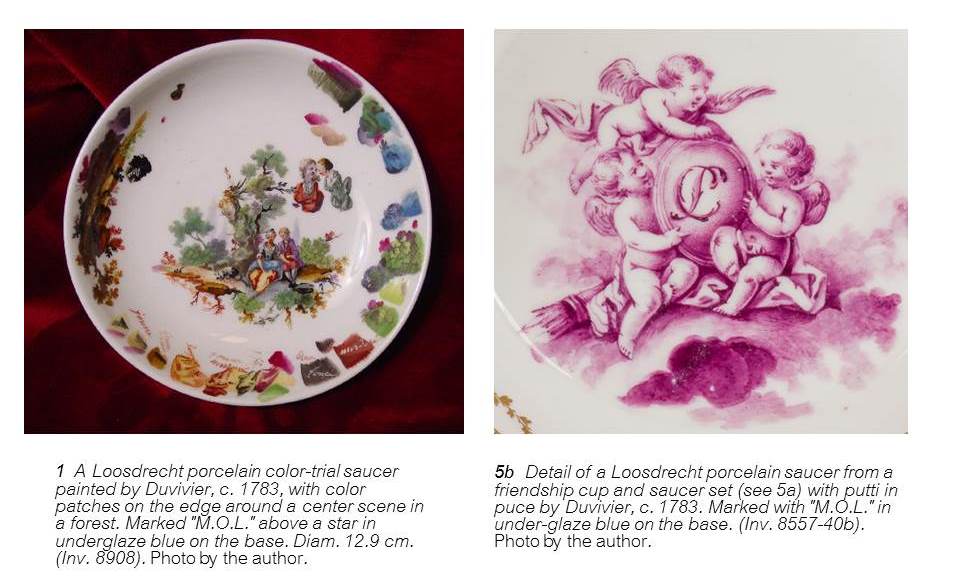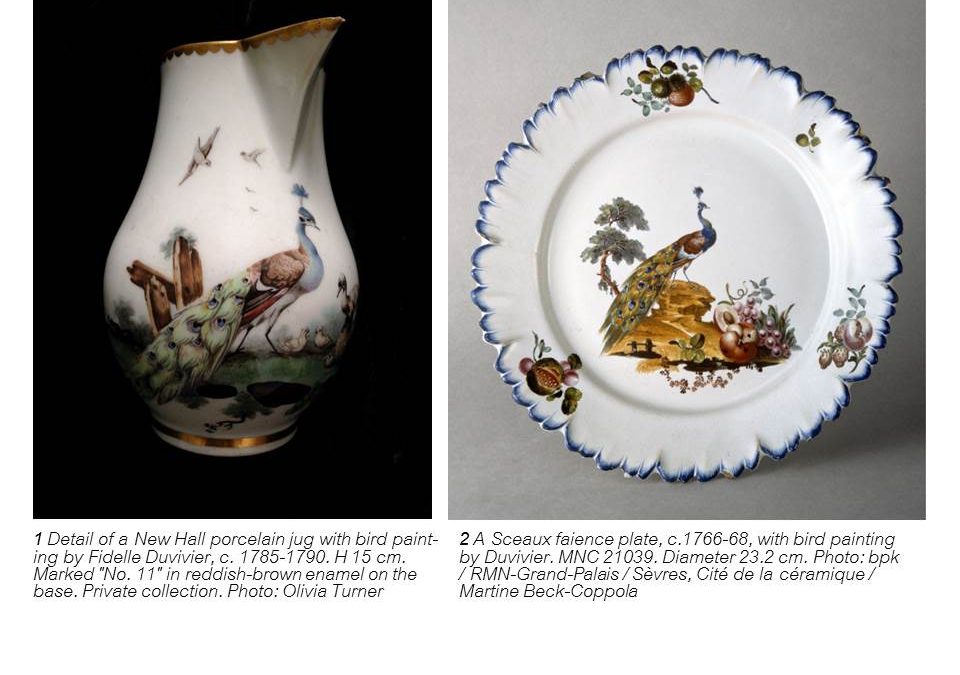
by Charlotte Jacob-Hanson | Jan 16, 2018 | Uncategorized
It is extremely fortunate that an extensive New Hall porcelain service painted with birds by Fidelle Duvivier, and auctioned by Christie’s in London in 1988, has survived intact to the present day in a private English collection. The milk jug of this service (i) is a particularly striking piece with its splendid peacock. It helped me to identify several other depictions of peafowl on Sceaux faience (ii) and Mennecy porcelain (iii) as his work, which were also included in my Duvivier book.
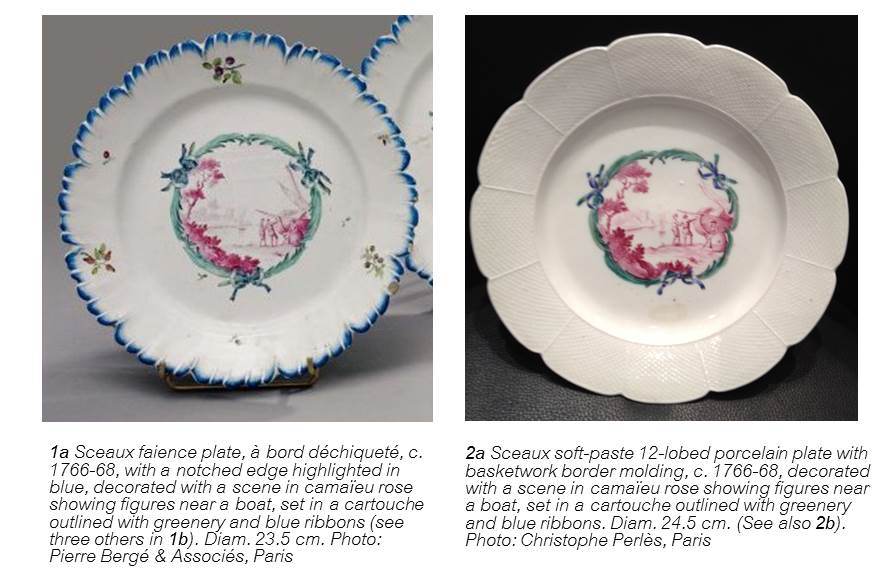
by Charlotte Jacob-Hanson | Oct 15, 2017 | Uncategorized
Both of these unmarked plates were made during the Jacques and Jullien period (1763-1772) at the Sceaux manufactory and decorated by Fidelle Duvivier during his first employment there,
c. 1766-68. By this time these two managing partners were openly making porcelain since the royal monopoly on porcelain production held by Vincennes was no longer being enforced.(i)
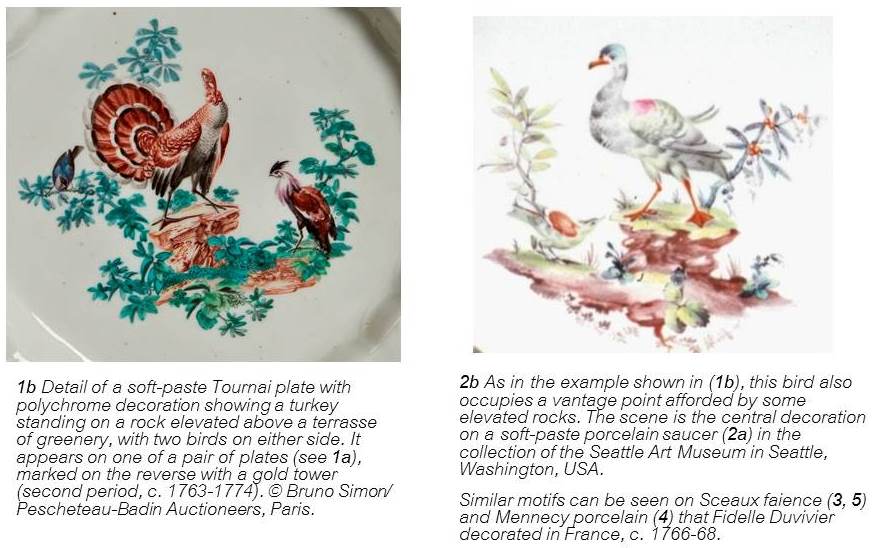
by Charlotte Jacob-Hanson | Aug 27, 2017 | Uncategorized
Could this saucer (2a) have belonged to a Chelsea-Derby teaset that Duvivier decorated while working for William Duesbury c. 1769-1773 at Derby? Many visible clues suggest it.
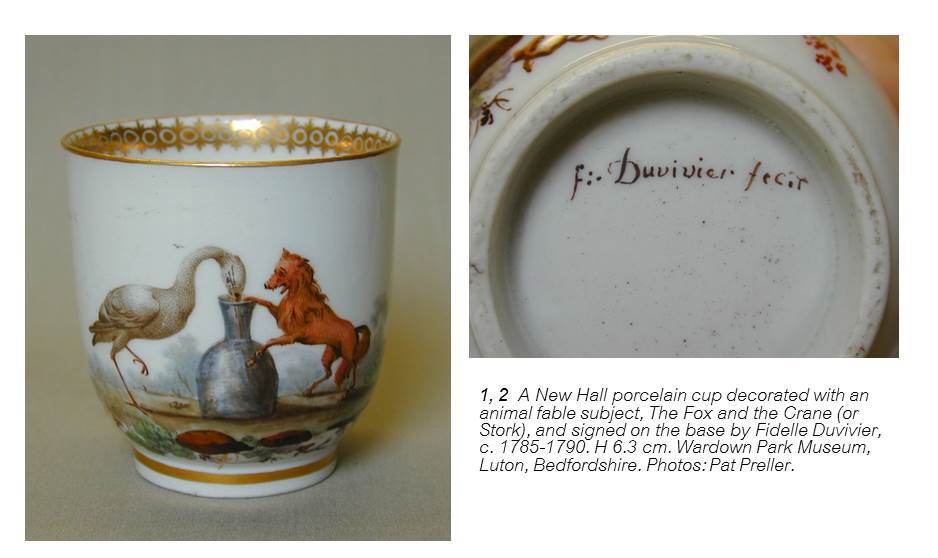
by Charlotte Jacob-Hanson | Jul 15, 2017 | Uncategorized
Although we know of five pieces of English porcelain signed by Fidelle Duvivier, this is the only one decorated with an animal fable subject. It appears to have been inspired by one of Aesop’s fables: The Fox and the Crane (also known as The Fox and the Stork in some published works), although no exact engraved source has been identified. Or, there may be a connection to the animal fables written by Jean de La Fontaine (1621-1695) that appeared between 1668 and 1694 in France, where the fable is known as Le renard et la cigogne.
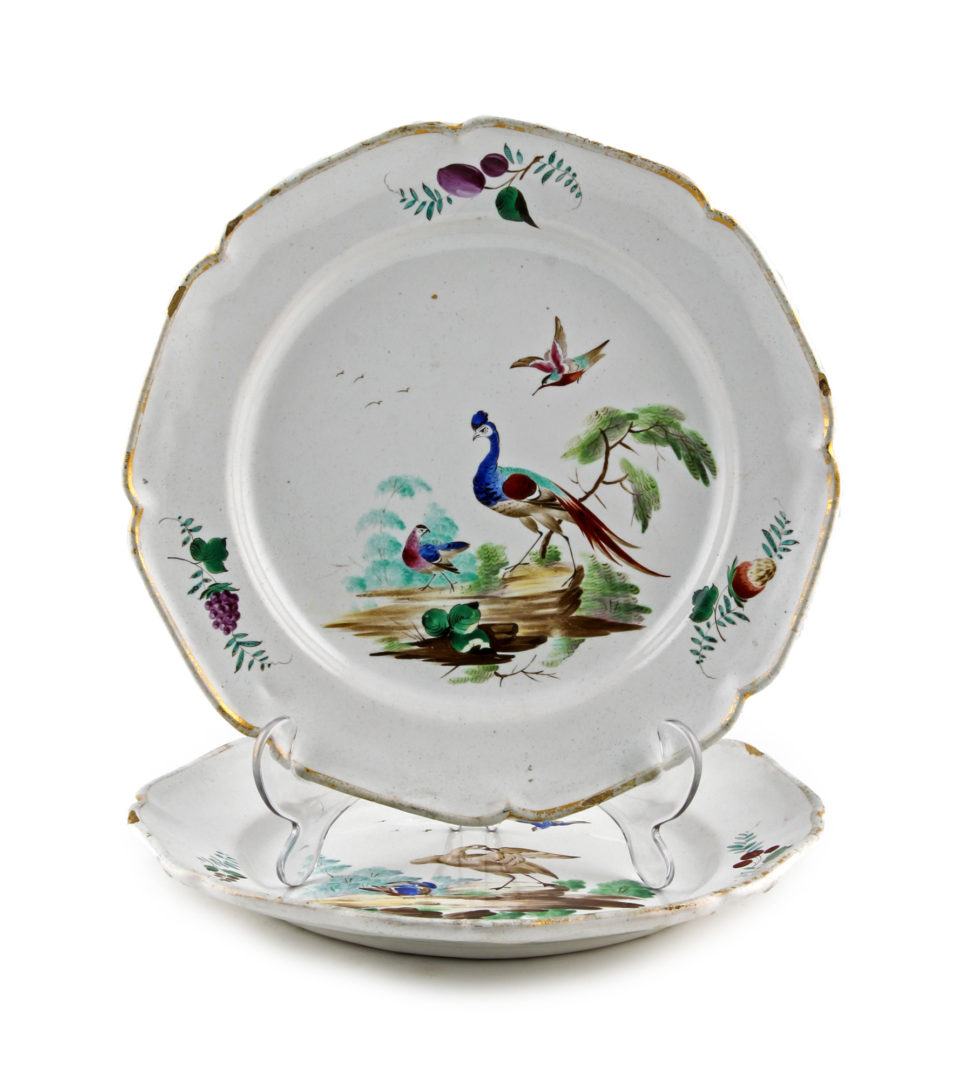
by Charlotte Jacob-Hanson | May 24, 2017 | Uncategorized
Shown here are two eight-lobed Sceaux faience plates decorated (by Fidelle Duvivier) in petit feu enamel colors with birds in flight or standing on rocky plateaux with vegetation, surrounded by fruits and delicately outlined leaves painted on the rims. Traces of gilding on the edges.
These two plates came up at a silent auction held in the spring of 2016 in Geneva, Switzerland.* A faience dealer in France was the successful bidder. By chance, I found them at his website a couple of months later and purchased them.
Although the vegetation is painted in a rather unfamiliar and more fluid style, the bird seen on the lower plate was a sure clue that these two plates were decorated by Duvivier (cf. 2, 3a/b, 4).


